Pichi Richi Railway is an operating museum, operating regular
heritage train journeys on the oldest remaining section of the famous narrow-gauge old Ghan railway.
Pichi Richi Railway is located at
Quorn, in South Australia's
Flinders Ranges. Trains depart from
Quorn and
Port Augusta. The railway is operated, maintained and managed by the dedicated volunteers of the Pichi Richi Railway Preservation Society Inc.
The railway from
Port Augusta through the
Pichi Richi Pass to
Quorn opened in 1879, and was part of the first stage of the Great Northern Railway that was intended to link
Port Augusta with
Darwin. The Ghan name originated in
Quorn in 1923 when the Great Northern Express was dubbed The Afghan Express by railwaymen. In 1929 this line reached
Alice Springs.
The East-West Transcontinental railway across the
Nullarbor Plain was completed in 1917, and the Pichi Richi Railway became part of the East-West route for the next 20 years.
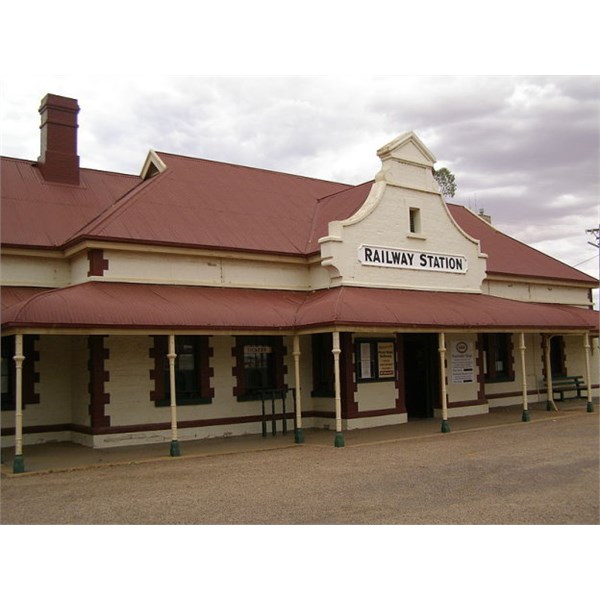
Quorn Railway Station
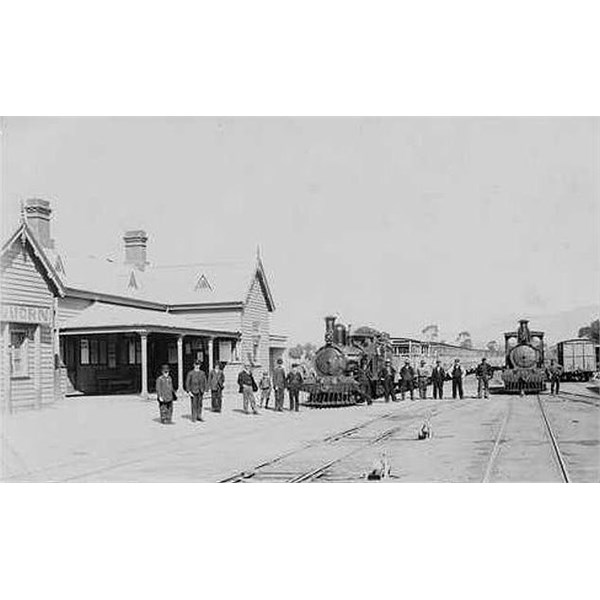
Two trains in front of the old Quorn railway station building, ca. 1910
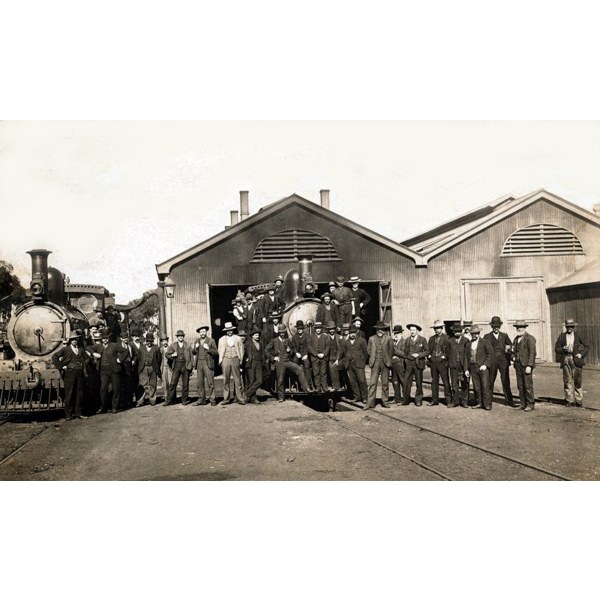
Two Y class locomotives and railway employees pose for photographs at the Quorn locomotive sheds ca. 1890
was a vital railway
junction, especially during World War II when military, coal and other traffic placed sizeable demands on the railway.
Washaways in the north and the incapacity of the railway to handle expanding traffic saw a new standard-gauge railway constructed from
Stirling North to Brachina, and the Pichi Richi Railway was closed to regular traffic in 1957.
The Pichi Richi Railway Preservation Society (PRRPS) is a non-profit railway preservation society and operating museum formed in 1973. The society, managed and staffed by volunteer members, operates
heritage steam and diesel trains on the restored 39 km section of track between
Quorn and
Port Augusta in South Australia. This railway line, constructed in 1878 as part of the South Australian Railways
Port Augusta and Government Gums Railway, once formed a part of the former Central Australia Railway and east-west Transcontinental line, and is the oldest remaining section of track of the former narrow gauge Ghan. It is now the only operational section of the Central Australia Railway.
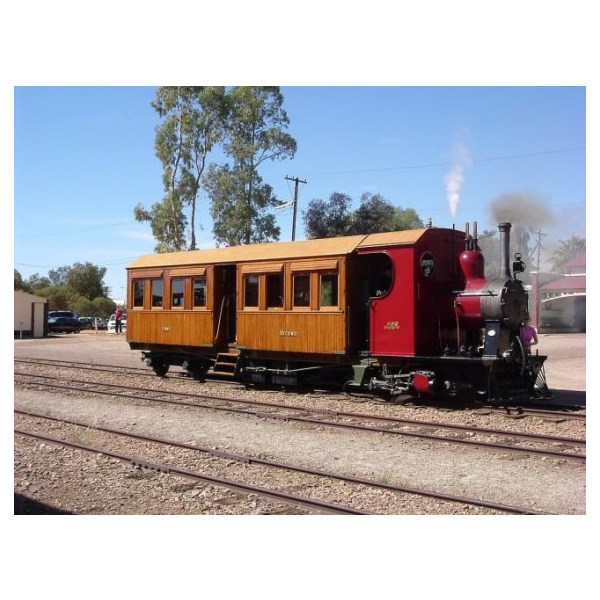
Coffee Pot in Quorn Station Yard
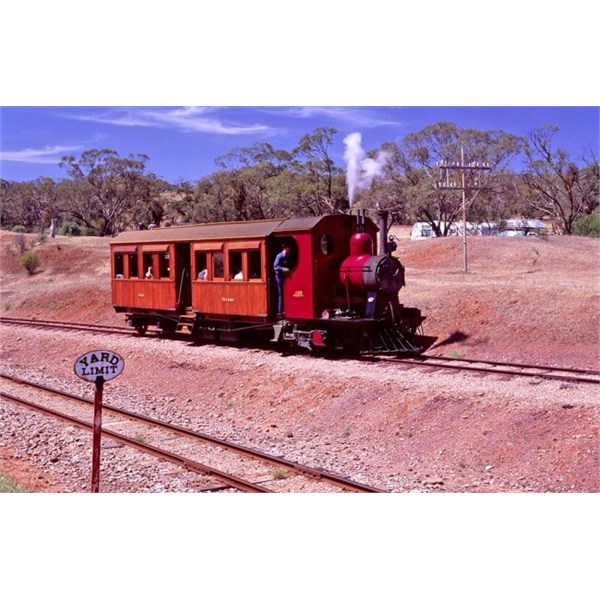
The Coffee Pot waiting at Summit for another train
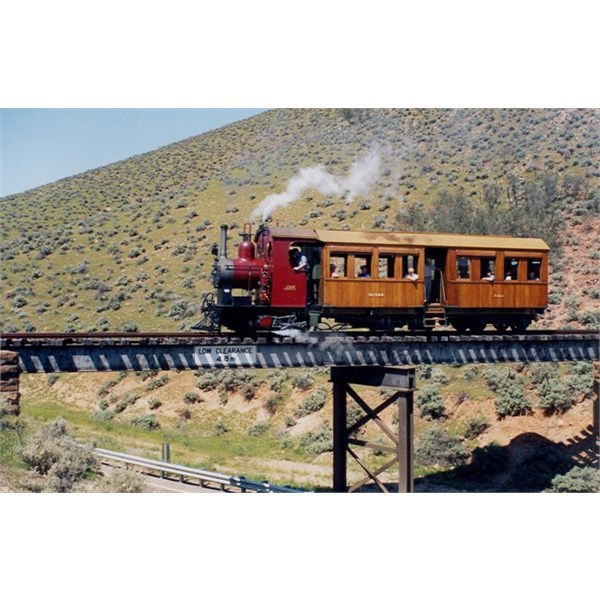
Saltia Bridge has Coffee Pot with the members' special returning to Quorn 2005
PRRPS bases its operations in
Quorn (on the site of the old locomotive depot) and runs through the
Pichi Richi Pass to
Woolshed Flat and
Port Augusta, and also operates out of
Port Augusta to
Quorn. The volunteer organisation has fully restored a fleet of South Australian Railways (SAR), Commonwealth Railways (CR) and Western Australian Government Railways (WAGR) steam and diesel locomotives, passenger and freight rolling stock. The society has progressively restored the railway to Summit (1974) (elevation 406m ), Pichi Richi (1974) (elevation 344m),
Woolshed Flat (1979) (elevation 269m) and
Stirling North (1999) on the original alignment, and to
Port Augusta (2001) on a new alignment between
Stirling North and
Port Augusta.
Pichi Richi is the name of the pass through which the railway travels, and is also the name of the former township located in the pass, after which the society is named. The name Pichi Richi is believed to come from the Australian native plant pituri, which was traditionally chewed by Australian Aborigines.
The Afghan Express is a return trip to
Quorn from
Port Augusta (78 kilometres return). This train usually consists of Ghan carriages from the 1920s and is often hauled, wherever possible, by an original Ghan steam locomotive, NM25, and recreates the type of travel experienced on the Ghan in the 1930s and 1940s.
Quorn Railway Station, now used by PRRPS as a
shop, ticket office, etc. A shorter journey, the Pichi Richi Explorer, is a return service to
Woolshed Flat departing from
Quorn (32 kilometres return). Travel on this train is either in South Australian Railway carriages circa 1900 to 1915 hauled by a steam locomotive, or in a 1928 SAR diesel railcar. The use of older SAR rollingstock on this train replicates what it was like to travel by country rail in South Australia in the very early 1900s to the 1960s. Much of this rolling stock was in service until the end of narrow gauge passenger operations by the South Australian Railways.
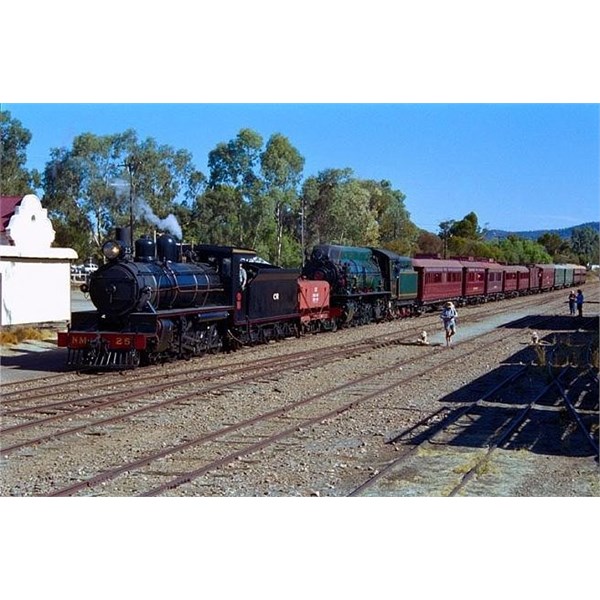
NM25 and W22 arriving at Quorn Railway Station
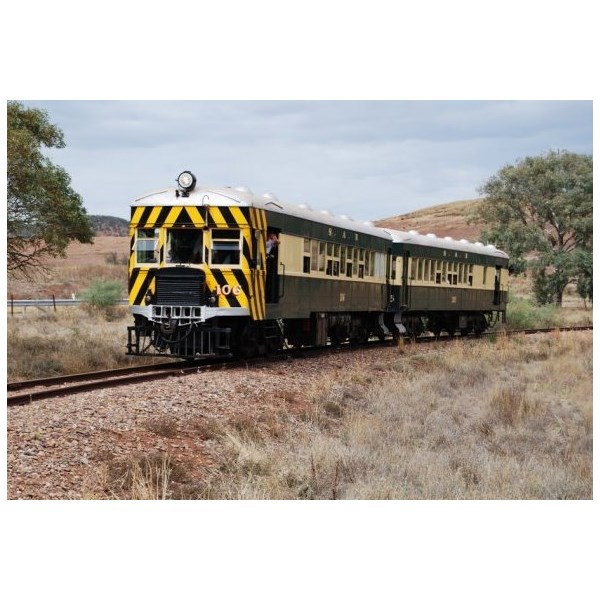
Built in March 1928, Railcar 106 spent 48 years in service with the South Australian Railways spending most of its time between Quorn and Terowie
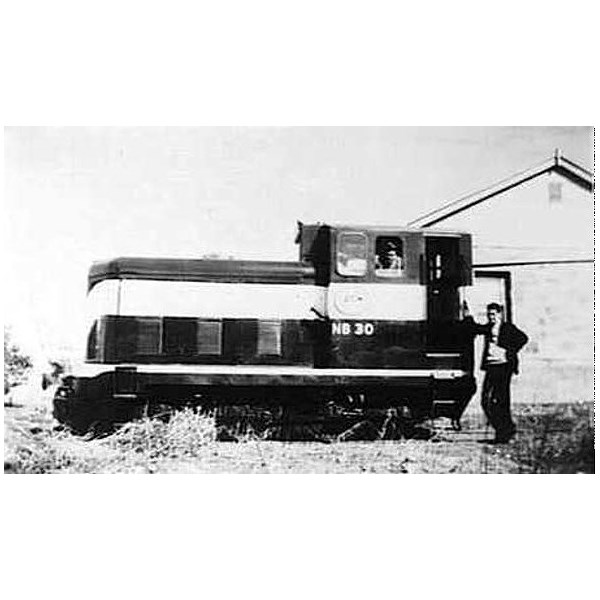
NB30 at Quorn in the 1950s
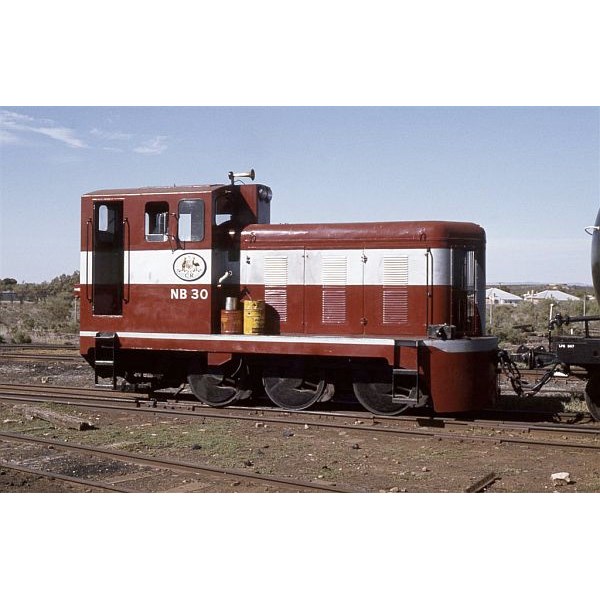
NB30 at Quorn, Easter 1981
Former CR steam locomotive NM25 was built in 1925 and was used on the narrow gauge train line between
Port Augusta and
Alice Springs. It is one of only two surviving examples of this class of steam locomotive. NM25 had remained static from 1965 until 1989, when PRRPS acquired it with the intention of restoring it to operational condition. NM25 remained out of service at the PRRPS
Quorn workshops until rebuilding commenced in 2000, as a part of the Pichi Richi Railway Development Plan stage 2. The overhaul took 3 years to complete, which included fabrication of almost all new parts including cylinders, frame, smoke box and tender, as
well as significant repairs to the boiler. The locomotive was officially recommissioned on 26 April 2003
During the Commonwealth Railways era (from 1937 to 1957), the train line between
Stirling North and
Port Augusta was dual gauge. Narrow gauge served the line to
Quorn and the standard gauge, which branched at
Stirling North, was for the line to
Port Pirie and also to
Marree. The standard gauge to
Marree was built in the 1950s on a new route west of the
Pichi Richi Pass, with the purpose of bypassing the narrow gauge section of the Central Australian Railway to
Marree, through
Quorn and
Hawker. The narrow gauge component of the section dual gauge track between
Stirling North and
Port Augusta was removed once the standard gauge line to
Marree was in full operation, and the narrow gauge route from
Hawker to
Marree had been closed and removed. This meant that the remaining narrow gauge line from
Stirling North to
Hawker via
Quorn was now isolated. On the occasions that a narrow gauge train needed to travel to
Port Augusta or to
Marree, the train would need to utilise a "piggy back" system. This arrangement saw the entire narrow gauge train loaded on top of a standard gauge train of flatcars and transported via standard gauge, then unloaded at the destination on to the existing narrow gauge.
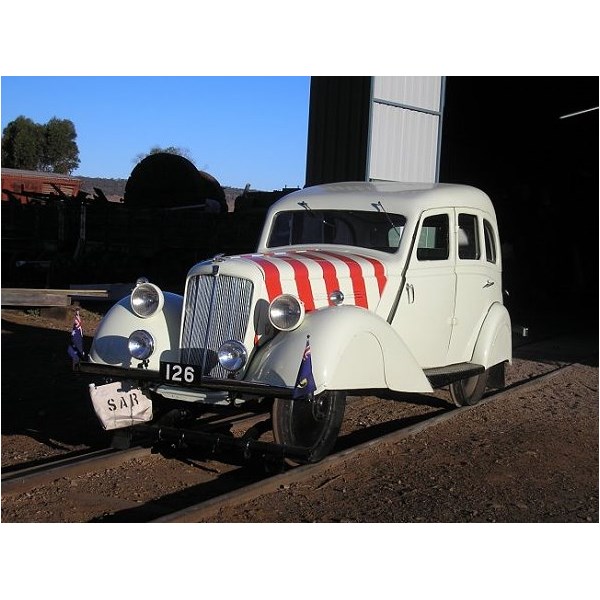
Motor Inpection Car MIC126
The first stage of returning narrow gauge train
services to
Port Augusta was the completion of 16 km of track rehabilitation between
Woolshed Flat and
Stirling North. This work included the complete replacement of sleepers and rail, re-timbering of several bridges and the construction of a turning triangle at
Stirling North. Part of the $1.35 million Pichi Richi Railway Development Plan project, it was completed in 1999. The extension was opened on 24 October 1999 by Tim Fischer, former Deputy Prime Minister of Australia.
It was announced in 2000 that funding was available through the State Government of South Australia, and the
Port Augusta City Council to extend the train line from
Stirling North in to
Port Augusta railway station. However there were significant works required for to complete this project.
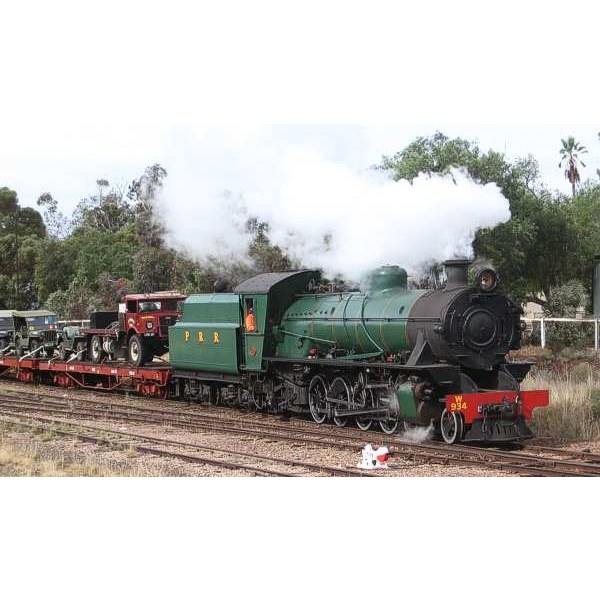
troop train 2009
Pichi Richi Railway is pleased to again be re-enacting a narrow gauge troop train for Great Southern Rail's 2014 ANZAC Tribute Journey.
Seats on this special train are available to the public only for a one way journey from
Quorn to
Port Augusta departing at 2:30pm.
.